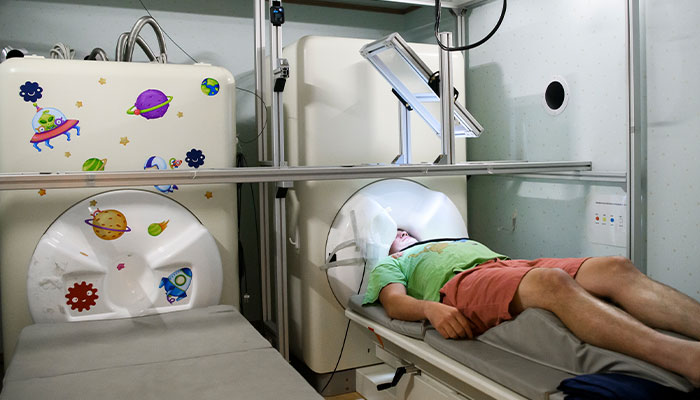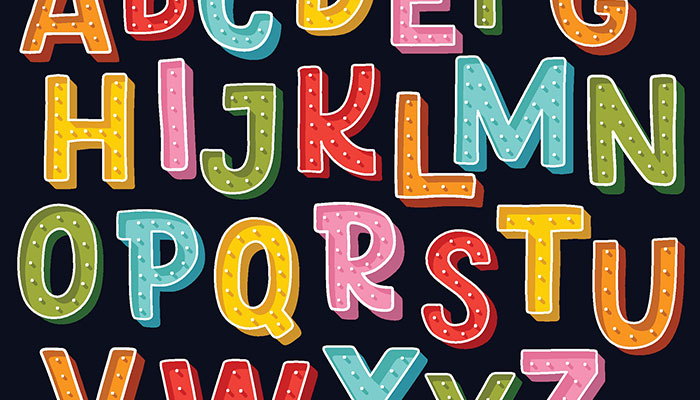Macquarie researchers have gained groundbreaking insights into the rare condition of synaesthesia by recording the magnetic brain signals of people who see colours where the rest of us do not.
In a world-first, the PhD research established that a synaesthete’s brain shows an overlapping neural pattern whether it is registering a ‘real’ colour, or one that is evoked by a non-coloured object, such as a letter or number.
“I am pretty excited we have found an objective measure in the neural signals of synaesthetes for these purely internal experiences,” says Director of Macquarie University’s Perception in Action Research Centre Professor Anina Rich, who supervised PhD candidate and the study lead author Lina Teichmann,
“A lot of people with synaesthesia have experienced other people saying: ‘You’re just making it up, you’re just imagining it’, so it will be really nice for them to see that there is objective validation for their experience.”
Rich describes synaesthesia as a phenomenon where an ordinary stimulus – such as a sound – gives an extraordinary experience – such as a colour. Synaesthetes, she says, have incredibly vivid and usually consistent experiences that the rest of us don’t share.
I am pretty excited we have found an objective measure in the neural signals of synaesthetes for these purely internal experiences.
There are many different forms of synaesthesia – sounds can evoke tastes, for instance, or smells can evoke shapes. But the most common is grapheme-colour synaesthesia, where letters, numbers or symbols evoke a colour experience. It was this form that the researchers focused on.
Their goal was to explore the neural mechanisms underpinning synaesthetic colours and their relationship to direct colour perception. These are still unclear despite two decades of increasing research internationally into the intriguing condition, experienced by about 1 per cent of the population and possibly more commonly by females.
Machine learning meets MEG
Eighteen grapheme-colour synaesthetes took part in the study at the cutting-edge KIT-Macquarie Brain Research (MEG) Laboratory, home to one of only two magnetoencephalography, or MEG, systems in the Southern Hemisphere.

Cutting edge: The MEG system at Macquarie University, one of only two in the Southern Hemisphere and used to record the brain signals of synaesthetes.
The volunteers each spent an hour lying still inside the MEG, which uses highly sensitive detectors to measure the tiny magnetic signals naturally produced by brain activity.
The research involved using machine learning methods to train an algorithm to recognise the pattern of neural activity when a synaesthete in the MEG looked at coloured shapes that all of us typically recognise to be red or green.
When the synaesthetes looked at the grey-scale letters that evoke a red or green experience for them, the algorithm trained on the actual coloured shapes could successfully classify the brain activity as ‘red’ v ‘green’ – a breakthrough result confirming that synaesthetes literally see the colours not available to the rest of us.
“This is one of the first really clear demonstrations of the relationship between synaesthetic colours and colour perception more generally, in that they actually share neural representation,” Rich says.
The findings were published this month in PNAS (Proceedings of the US National Academy of Science).
Time lag points to higher-level processing
Importantly, the synaesthetic colour was apparent in the brain patterns after a delay of about 100 milliseconds compared to the neural signal when people see ‘actual’ colours.

Different shades: The most common form of synaesthesia is grapheme-colour, where letters, numbers or symbols evoke a colour experience.
“What it shows is that what is happening in the brain when people are experiencing synaesthesia has similarities with what is happening in the brain when we are all experiencing colour, but it happens a bit later,” Rich says.
The finding supported the researchers’ working hypothesis of ‘conceptual mediation’, one of the two major theories of synaesthesia; the other, cross-activation, proposes synaesthesia is a result of unusual neuronal connections, which would predict that colour is automatically co-activated with the stimulus that induces it.
We are trying to see whether the neural pattern of actually being touched also occurs when you simply see someone being touched.
Conceptual mediation, on the other hand, proposes that synaesthesia builds on mechanisms that we all have and involves access to the concept (eg, of a letter) before a synaesthetic colour is elicited after higher-level processing.
“This could use the same ‘object colour knowledge’ system that we all use to interpret what we are looking at,” Rich says.
“You know that a banana is yellow. Your concept of a banana is likely to have that colour yellow as a very strong component, even if you are looking at a black and white image of a banana,” she says.
“For a synaesthete, it seems the concept of a letter has a similarly strong component of colour that is not present for the rest of us. These neural methods have allowed us to measure that.”
Opening the doors of perception
Right now, in Macquarie’s Synaesthesia Research Group, the methods developed for Teichmann’s PhD are being applied to mirror-touch synaesthesia, a form of the condition where a synaesthete who sees someone else being touched experiences the feeling of being touched themselves.
“PhD student Sophie Smit is working on an experiment where we are trying to see whether the neural pattern of actually being touched also occurs when you simply see someone being touched,” Rich says.
She says the ability to record neural signatures of subjective experience opens many doors beyond the study of synaesthesia by showing proof of concept that researchers can look at different aspects of what people are thinking about.
“”There are so many aspects of cognition that might be able to be studied in this way, so the methods we have used have great potential,” she says.
“But also we’re just really happy we managed to get a nice measure of synaesthetes’ experience.”
Anina Rich is Professor in the Department of Cognitive Science, Director of the Perception in Action Research Centre, and heads up the Synaesthesia Research Group @ MQ.
If you would like to find out more or participate in synaesthesia research at Macquarie University, click here.








